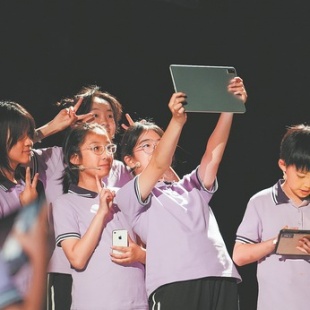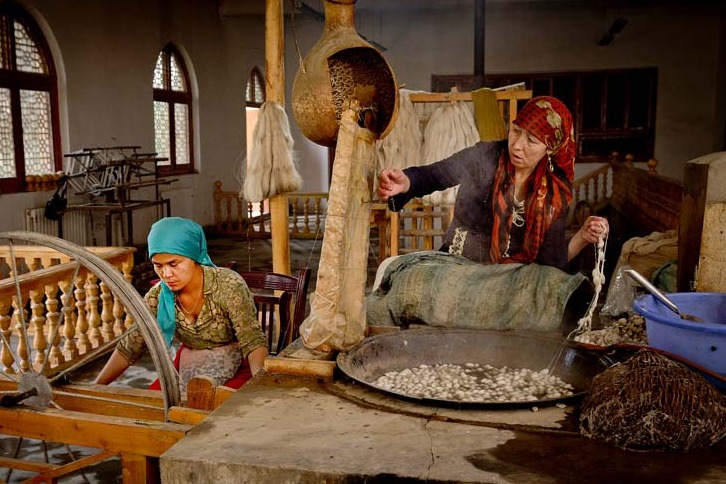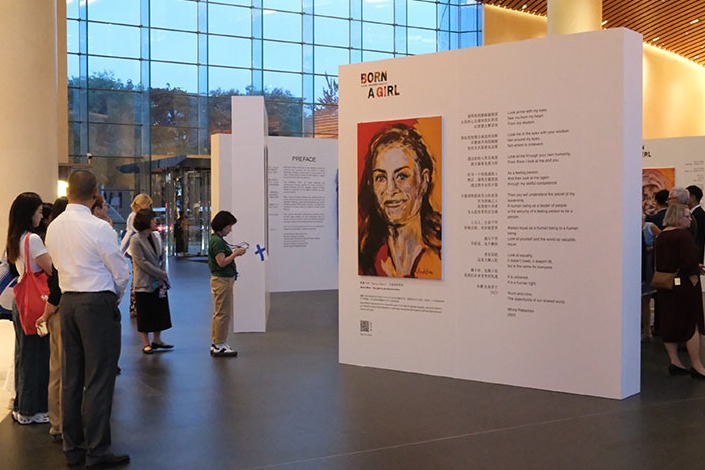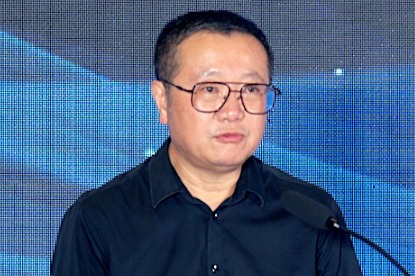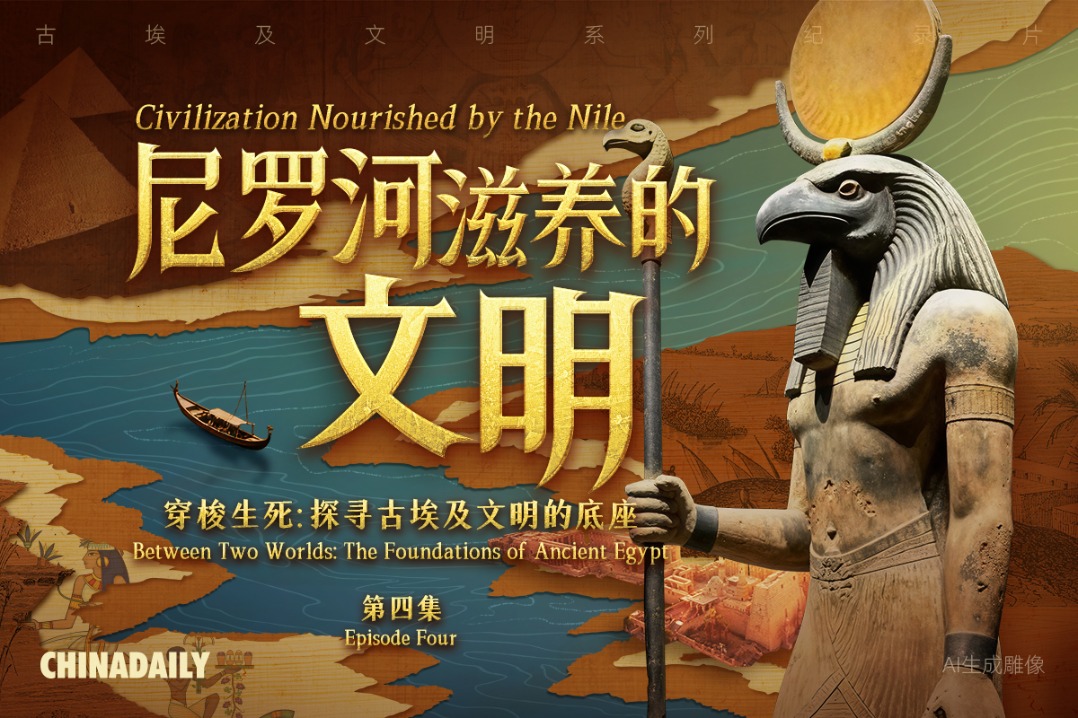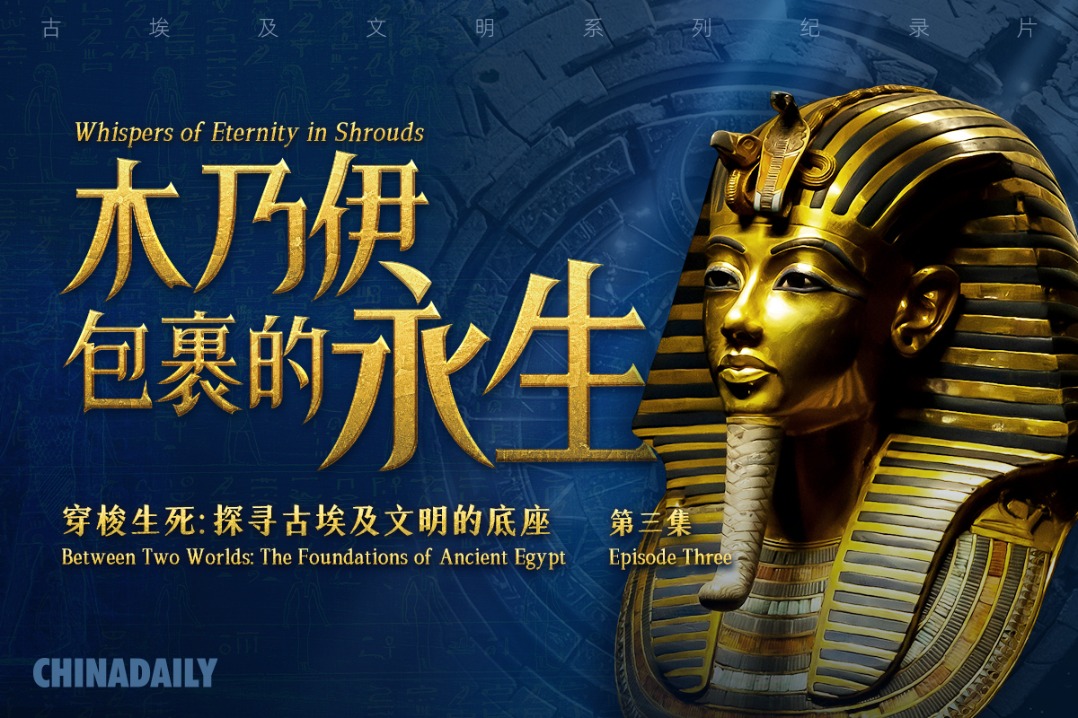The self in the age of social media

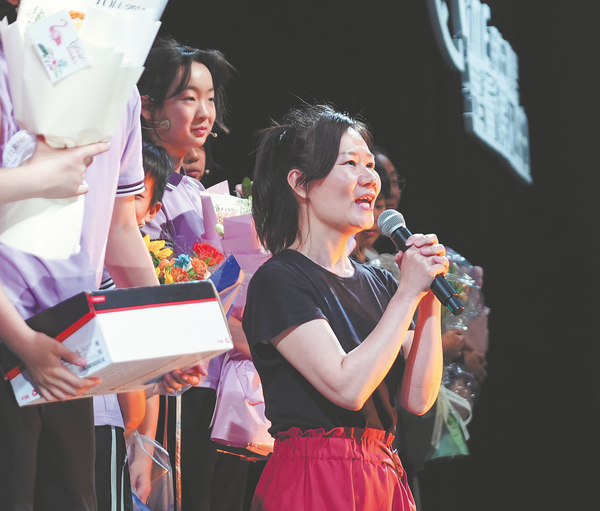
When Cooper began researching and working on the play, he was struck by the different perspectives of the older and younger generations. While the older generation tends to make a clear division between the digital world and reality, the young constantly move between the two realms.
"In fact, I'd go further to say that the synthesis between the virtual world and the real world is such now that for our children, it is the reality. It's a profound change in culture and in human consciousness," Cooper says.
Prior to the production, Chen asked Cooper to present a story framework, deliberately leaving space for development.
Through a collaborative creative process with the youngsters, who wrote poems and created drawings and installations, the final production has been enriched by what emerged.
In a creative session, Chen helped the students to each design a desk for their character. They began with sketches on paper, and then turned desks into art installations. Through symbolic elements and hidden objects, the owners' secrets and personal struggles are made apparent.
"When the protagonist pulls objects from the desks, she is able to hear the inner voices of those to whom they belong. These voices are the work of the children themselves. The creative process is actually an exploration of the feelings experienced by primary and middle school students," Chen says.
"Through the voices, we are able to see that the characters have secrets, weaknesses, and sentiments they can't express to others. Theater helps us understand our children, feel what they feel and better support them."
The production also includes a personified AI character, who appears to talk with the protagonist whenever she encounters a struggle. According to Chen, this is a reflection of the fact that a lot of youngsters now resort to AI chatbots instead of their friends and family when they need to talk with someone.
"But in my conversations with the children, they also said the chatbots can't really solve any problem. They can never replace real human beings, but simply use big data analytics to generate a response. When they are picked on by others, chatbots often tell them to be understanding or reasonable, which they find unhelpful," she says.
Through the performance and creativity of young performers, the play asks the audience, teenagers and adults alike, "who am I" in this world of information overload and increasing dependence on digital tools.
"This play is about how relationships between children are mediated by the tools of social media, and also how the relationship between adults and children is mediated by a deeper crisis, which is an inability to recognize the needs of each other, and be able to speak to each other," Cooper says.
Contact the writer at chengyuezhu@chinadaily.com.cn


